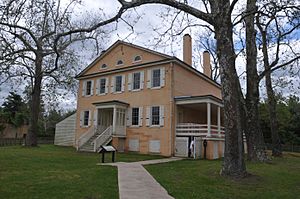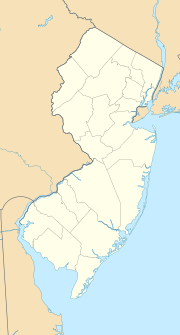Atsion, New Jersey facts for kids
Quick facts for kids
Atsion, New Jersey
|
|
|---|---|

Samuel Richards Mansion in Atsion
|
|
| Country | |
| State | |
| County | Burlington |
| Township | Shamong |
| Elevation | 49 ft (15 m) |
| Time zone | UTC−05:00 (Eastern (EST)) |
| • Summer (DST) | UTC−04:00 (EDT) |
| GNIS feature ID | 874418 |
Atsion is a small community in Shamong Township, Burlington County, New Jersey. It's not a separate town with its own government. Instead, it's part of a larger township. Atsion is located right next to Atsion Lake.
This community is found inside the large Wharton State Forest. You can find a forest office, a parking area, and an information spot in Atsion. These are great for visitors exploring the forest.
Atsion's Early Days
Atsion has a long history. In 1766, a man named Charles Read built a special factory here. This factory was called a bog iron forge. It used iron found in swamps to make useful metal items.
Later, in 1822, Samuel Richards bought the property. His family already owned another iron works nearby at Batsto Village. This shows how important iron making was in this area long ago.
Atsion Village: A Historic Place
|
Atsion Village
|
|
| Location | U.S. Route 206 at Hampton Road |
|---|---|
| Area | 703 acres (284 ha) |
| Built | 1766 |
| Built by | Charles Read |
| Architectural style | Greek Revival |
| NRHP reference No. | 74001154 |
| Significant dates | |
| Added to NRHP | October 22, 1974 |
Atsion Village is recognized as a historic district. This means it's a special area with important old buildings. It was added to the National Register of Historic Places in 1974. This list includes places important for their history or architecture.
The district is important for its old buildings and its history of industry. There are seven main buildings that help tell the story of Atsion. One of the most famous is the Samuel Richards Mansion. It was built in 1826. The mansion shows off the Greek Revival style, which was popular at the time. This style often includes tall columns and grand entrances, similar to ancient Greek temples.




